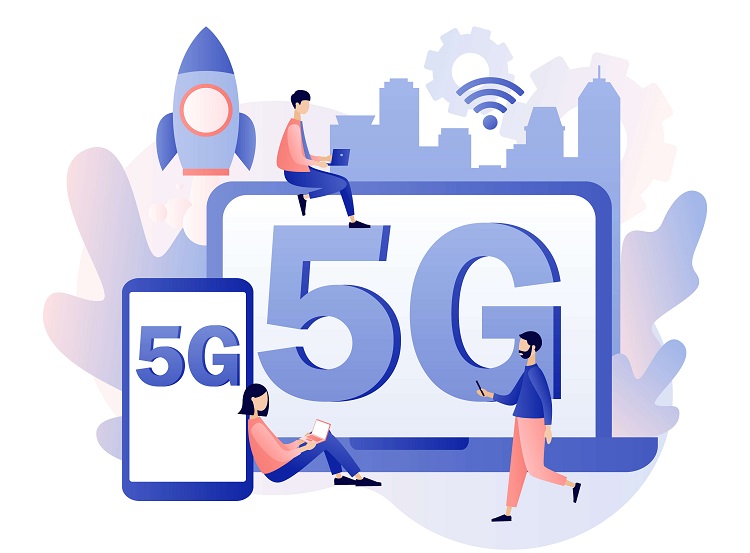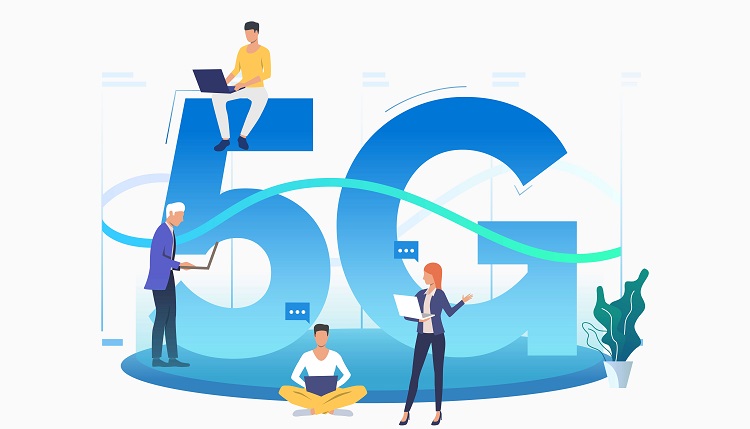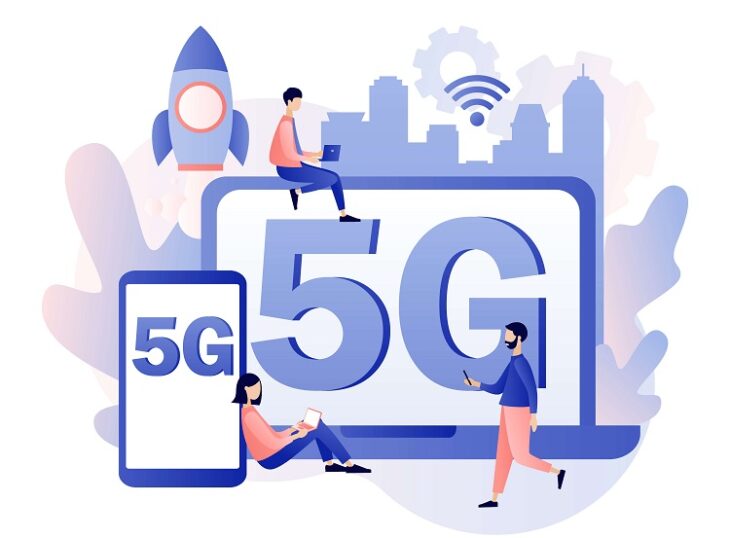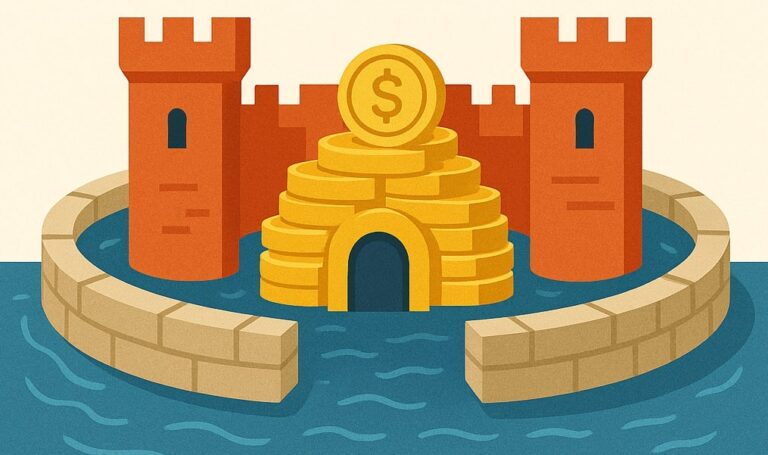5G stands for “fifth generation” and refers to the latest generation of wireless mobile technology, providing much faster data transmission than even 4G, thus opening up the world to a whole host of new possibilities.
Table of Contents
ToggleInteresting 5G Stats and Facts 2024
The power of 5G is quite incredible.
- 5G is the most recent generation of mobile technology, following on from 4G and going right back to 1G, which was first launched in the 1970s
- 1G offered data transmission speeds of just 2.4 KB/s; by comparison, 5G is set to deliver information transmission (under certain circumstances) at an incredible 20 GB/s (about 8.3 million times faster)
- 5G’s reduced latency speeds (the time it takes between a machine being given a command and the action being completed) are as low as 1ms, compared to 4G’s 200ms
- The human eye reacts to visual stimuli at a latency of about 250ms, meaning that 5G is technologically 250x faster than us at reacting to instruction
- 5G can connect more than 1 million devices per square kilometer
- The number of devices connected by 5G is equal to roughly three times the entire world’s population
- Smartphones connected to 5G will get download speeds of around 87.5 MB/s. Compare this to 4G, which offered about 1.87 MB/s, and it’s clear that 5G is about 20x faster than 4G
- 5G will deliver up to 1,000x more capacity than 4G
5G Adoption Stats and Facts 2024
5G is slowly being adopted all around the world.
- 5G will require more base stations to be built to allow for the transmission of this network
- The exposure to you or me from the transmission of 5G from base stations will be at around 3.5GHz, which is about the same as we receive from current cell towers, and thus there should be no consequences for public health
- By 2026, 5G adoption is expected to account for 80% of all mobile subscriptions in North America, 35% in Central and Eastern Europe, 68% in Western Europe, 30% in Southeast Asia and Oceania, and 66% in Northeast Asia
- By 2026, 5G adoption is expected to account for only 5% of all mobile subscriptions in Sub-Saharan Africa, 15% in North Africa and the Middle East, 27% in India, and 26% in Latin America
- 5G-enabled smartphones currently comprise about 40-50% of all smartphone shipments globally
- In the US, Samsung produces a huge 74% of all 5G-ready smartphones
Benefits of 5G Stats and Facts 2024

5G will completely change the world.
- The super-low latency of 5G will allow us to build certain machines and innovations in technology we could not previously, like self-driving cars and telesurgery.
- With 5G, you could download an HD 3GB movie to your phone in just 35 seconds, compared to about 30 minutes on 4G
- The increased speed of data transmission between machines will allow for a revolution in digital technologies, including the so-called “Internet of Things”
- 5G networks can carry a vast number of devices, meaning you’ll no longer struggle to get a signal in a crowded space
- With decreased latency, manufacturers will be able to rely on 5G-powered ‘smart’ machinery to quickly and efficiently produce goods on the production line
- 5G could allow medical students to practice surgery in a connected, virtual reality environment that reflects a real-life experience
- Autonomous farming machinery could use 5G to tend crops and fields remotely without human assistance
- Healthcare could be vastly improved with 5G, from biomonitors to test patients and ‘smart’ ambulances on the streets to keeping families and patients connected through virtual reality
5G Trends 2024

What will the future of 5G look like?
- The number of global 5G subscribers is expected to reach 2.7 billion by 2025
- Most 5G subscribers are situated in Northeast Asia, North America, and Western Europe
- About 45% (nearly half) of all 5G subscribers are and likely will be in future located in Northeast Asia
- The global 5G market size was estimated at $41.48 billion in 2020
- The global 5G market is expected to reach $664.75 billion by 2028
- The 5G chip market is expected to be worth $22.86 billion worldwide by 2027
- The cost of the fiber infrastructure required to sufficiently carry 5G technology in the USA alone is estimated to be between $130-$150 billion
- By 2025, it is forecasted that 5G infrastructure will be used mostly for the manufacture of consumer electronics and vehicles, whilst industry, energy, and utilities will comprise the majority of the rest of 5G use
You might be interested to check those related posts as well:
- 45 Amazing Vodafone Stats and Facts [and More] 2024
- 59 Impressive Wish Inc Stats & Facts [Usage & Revenue] 2024
- 20 Amazing Extended Reality Stats 2024 [Facts and Trends]
FAQs
How many people are on the 5G network?
At the time of writing, there are roughly 236 million subscribers to 5G networks worldwide, comprising a fairly small percentage of the global population.
This figure is, however, expected to rise to 3 billion 5G subscribers by 2025 (or around 38% of the world’s projected 2025 population).
Which country has the biggest 5G network capacity?
Currently, China has the biggest 5G network capacity, covering 341 of its cities with 5G.
A lot of this has to do with technology manufacturer Huawei (a Chinese company), which is, alongside Samsung in the US, leading the charge on 5G. The US has the second biggest 5G network capacity.
How much of the world has access to 5G connectivity?
Today, only about 3% of the entire world’s population has access to 5G connectivity.
The majority of 5G subscribers are situated in North America, Western Europe, and Northeast Asia, whilst Sub-Saharan Africa, North Africa, and the Middle East have almost no access in comparison.
Conclusion
5G might seem a novelty now, useful in smartphones for faster internet service or in-game consoles for smoother gaming, but the reality is much more impressive.
Very soon, we are likely to find our entire world transformed by 5G, for better or worse.



